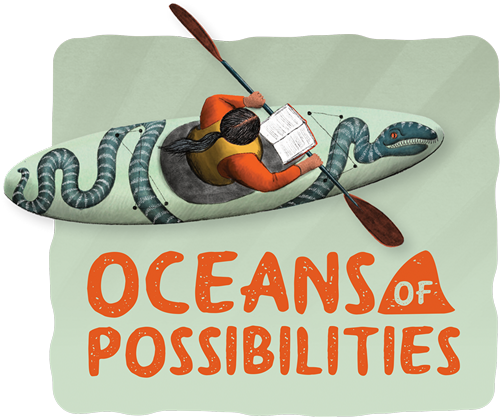Activities for Teens: Week 6

Coral Reef Creations
Frequently called “rainforests of the sea,” coral reefs are some of the most diverse ecosystems in the world! They serve as a primary habitat, breeding area, and food source for all types of marine life. Play videos of coral reefs, then discuss what lives there. The biggest coral reef in the world, is the Great Barrier Reef is located. Find it on a map!
These are family activities, one is ongoing. You may see results in 5 days, so begin this at the start of the week. When it grows more, send in another picture!
Craft #1: Grow Your Own Coral Reefs (ongoing)
Materials:
- Dolomite rocks, or dolomite powder and small pieces of sponge (try garden supply stores or Amazon)
- Household vinegar
- Small, clear containers
Coral reefs are made from calcium carbonate crystals (aragonite), and children can grow their own! Place a dolomite rock (or a piece of sponge mounded with dolomite powder) in a small container, then cover the rock/sponge about three-quarters of the way with household vinegar. Keep the rocks where they will not be disturbed for 5 days to 2 weeks, at which point they will be ready to move and display.
Craft #2: Coral Reef Sculptures
Materials:

- 8–10” cardboard circle or a floral foam half sphere for each participant
- Glue
- Pipe cleaners
- Scissors
- Various recycled materials and craft supplies, such as paper tubes, paper egg cartons, coffee filters, seashells, burlap pieces, beads, colored moss, acrylic or tempera paint, glitter Mod Podge, scissors, paintbrush, beads, pom-poms, rocks, pipe cleaners, coffee filters, fusilli pasta, pool noodles, and any other textured materials (optional).
The simplest version of this craft is to provide floral foam and pipe cleaners precut into various sizes and lengths. Roll and twist the pipe cleaners into various shapes, then glue them into the floral foam. Depending on budget and/or supplies on hand, consider expanding material options for more detailed and layered sculptures. A coating of glitter and Mod Podge, or seashells or rocks, makes a good base layer.
Survival Island: Can You Survive?
Test your ability to survive on a deserted island!
Station #1: Make Your Own Water Filter
Materials:
- Empty 2 liter soda bottles (1 per filter)
- Exacto knife
- Rubber bands
- Spoons
- Assortment of layering materials, such as rocks of various sizes, gravel, charcoal, sand, cotton balls, or clay
- Coffee filters, napkins, or socks

Before the program, precut the soda bottles into two pieces. The cap section, or top of the bottle, should be shorter than the bottom section. Prepare the “dirty” water (with dirt and cooking oil) that participants will use to test their filters.
Assembly:
- Place top section upside down in the bottom section.
- Participants layer filter components into the upside-down cap section.
- The finest layers (such as sand) should be at the bottom to catch the finest particulates. Larger materials are layered on top.
- Place filter or napkin around the bottom of the mouth of the bottle and secure it with a rubber band.
- Give them time to test their filters with the dirty water.
Station #2: Write a Real List, and a Wish List
- Think about 5 things you would need to survive on a desert island.
- Then, think of 5 imaginary fun things you would want to have for fun.




